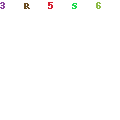
Why, yes, I did receive your "constructive criticisms"
on how I'm handling my grief
and I'm already finding them useful."
Thursday's Therapy
How is the
Pain of Trauma
so often Missed in
Child-Loss Grief Therapy?
Trauma has a huge impact on all aspects of our human civilization and individual lives. Yet, the reality of trauma is often overlooked....
How can the pain of trauma be so often missed?
When we write books or formulate approaches to an issue, we are often filled with concepts and words that distance us from the experiential reality of the topic at hand... Such word-based theoretical frameworks are important in pulling us out of the immediacy of moment-to-moment experience, allowing us to gain a perspective on the larger picture than what direct sensation by itself allows. (But--) Without the balance of the non-linguistic world of
- images,
- feelings, and
- sensations,
the seduction of words and ideas can keep us from direct experience in our daily lives and professional work. On a societal level, such an imbalance can keep us in a state of denial.
In a psychotherapeutic setting, focusing primarily on word-based thinking and narratives can keep therapy at a surface level and Trauma may remain unresolved.
An overemphasis on logical, linguistic, linear, and literal thinking may tilt the balance of our minds away from the important
- sensorimotor
- holistic,
- autobiographical,
- stress-reducing,
- image-based self-regulatory functions of our nonverbal neural modes of processing.
Linking these two very different but important ways of knowing (Word-Based Thinking AND Sensorimotor Information*) is the essence of creating balance in our lives and in our understanding of complex human experiences such as Trauma.
{*Sensorimotor Information = body sensations created by input into the physical senses - smell, touch, hearing, seeing, and tasting, plus body movement patterns and memories}
~ Daniel J. Siegel, M.D., Trauma and the Body
*****
THE BODY, FOR A HOST OF REASONS, has been left out of the "talking cure."
Psychotherapists who have been trained in models of psychodynamic, psychoanalytic, or cognitive therapeutic approaches are skilled at listening to the language and affect (emotions) of the client. They track clients' associations, fantasies, and signs of psychic conflict, distress, and defenses. They register the various narrative threads clients bring, bearing in mind how and where the childhood story repeats itself in the present. They are skilled in creating the therapeutic alliance, working within a therapeutic frame, and recognizing transference and countertransference nuances and enactments. They monitor physical symptoms, using psychopharmacological interventions when indicated. And they invariably take note of the physical presentation of their clients, such as the mannerisms, subtle changes in weight or choice of clothing, the slumped posture of a depressed client, or agitated movements of an anxious client.
Yet although most therapists are trained to notice the appearance and even the movements of the client's body, working directly with the client's embodied experience is largely viewed as peripheral to traditional therapeutic formulation, treatment plan, and interventions.
(These) traditional therapeutic models are based primarily on the idea that change occurs through a process of narrative expression and formulation in a "top-down" manner.
For example..., successfully facilitating affective connection to painful past experience and addressing the accompanying cognitive distortions within the context of a therapeutic relationship will bring about a positive change in sense of self and thereby a relief of suffering and improvement in well-being. The working premise is that a significant change in the client's cognitions and emotions will effect change in the physical or embodied experience of the client's sense of self.
The prime target for therapeutic intervention is therefore the clients language; that is, the narrative is the entry point into the therapeutic process. The client's verbal representation, beliefs, and affects are engaged, explored, and reworked through the therapeutic relationship. Improving ego functioning, clarifying meaning, formulating a narrative, and working with emotional experience are fundamentally helpful interventions that accomplish real gains for the client.
{Warning: Traditional Psychotherapy may not be deep enough in its extent to delve into the intricacies of Trauma Therapy. Additional training may be needed for most traditional psychotherapists to be able to effectively treat Trauma!}
To these already useful cognitive and dynamic practices and techniques, (the Trauma experts) propose the addition of "bottom-up" interventions that address the repetitive, unbidden physical sensations, movement inhibitions, and somatosensory intrusions characteristic of unresolved Trauma.
Traumatized clients are haunted by the return of trauma-related sensorimotor reactions in such forms as
- intrusive images,
- sounds,
- smells,
- body sensations,
- physical pain,
- constriction,
- numbing, and
- the inability to modulate arousal.
By including body sensation and movement as a primary avenue in processing Trauma, sensorimotor psychotherapy teaches the therapist to use body-centered interventions to reduce these symptoms and promote change in the cognitions, emotions, belief systems, and capacity for relatedness in the client.
So (the Trauma Experts) strongly advise that traditionally-trained psychotherapists increase the depth and efficacy of their clinical work by adding body-oriented interventions (such as Sensorimotor psychotherapy) to their repertoire.
Sensorimotor psychotherapy builds on traditional psychotherapeutic understanding but approaches the body as central in the therapeutic field of awareness and includes observational skills, theories, and interventions not usually practiced in psychodynamic psychotherapy. Theoretical principles and treatment approaches from both the mental health and body psychotherapy traditions are integrated in this approach. The practice of sensorimotor psychotherapy blends theory and technique from cognitive and dynamic therapy with straightforward somatic awareness and movement interventions such as helping clients become aware of their bodies, track bodily sensations, and implement physical actions that promote empowerment and competency.
(Trauma Experts maintain that) Sensorimotor Psychotherapy interventions actively incorporate the body into therapy, providing a much more unified mind-body approach to the treatment of Trauma.
(These Trauma Experts) believe that most other psychotherapeutic approaches do NOT provide a methodology that directly addresses Trauma-related bodily responses and chronically activated somatic symptoms.
Instead the traditional psychotherapy interventions focus primarily on cognitive, behavioral, psychodynamic, ad psychopharmacological interventions that, despite having been validated through research, are only somewhat successful in treating the Trauma-related disorders seen in clinical practice.
Therapists of all disciplines are often puzzled and frustrated by the limitations of existing treatment modalities to resolve the symptoms of Trauma in their clients.
(But Ogden and others stand ready to train us in this very needed art and science of helping traumatized individuals.)
~ Pat Ogden, Trauma and the Body
Now we can see why the Pain of Trauma is so often Missed in Child-Loss Grief Therapy!













































No comments:
Post a Comment